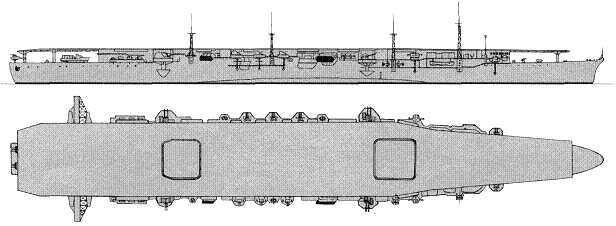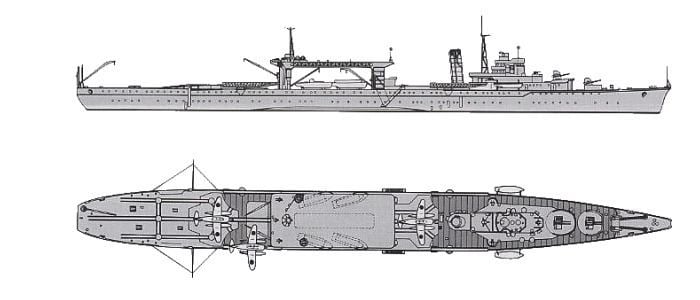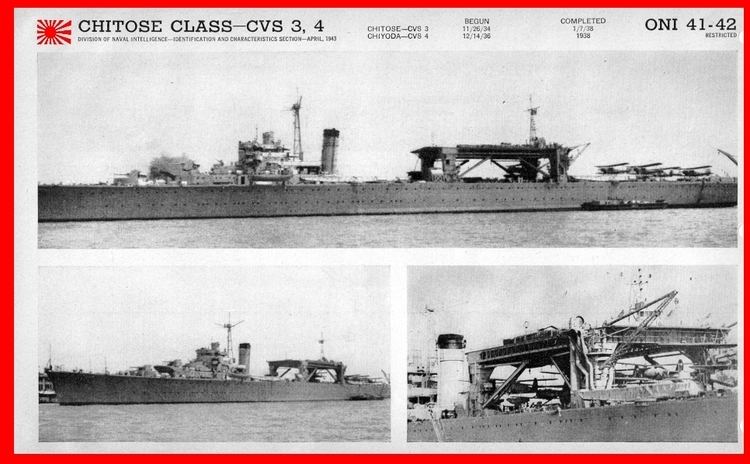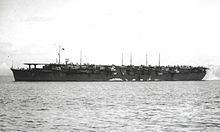Name Chitose (千歳) Commissioned 25 July 1938 Construction started 26 November 1934 Length 192 m | Laid down 26 November 1934 Refit 1942 to 1944 Launched 29 November 1936 Beam 23 m | |
 | ||
Namesake Japanese for "thousand years" Reclassified 15 December 1943 as light carrier Builders | ||
Chitose (千歳) was a light aircraft carrier of the Imperial Japanese Navy during World War II. First laid down as a seaplane tender in 1934 at Kure Navy yard, the ship originally carried Kawanishi E7K Type 94 "Alf" and Nakajima E8N Type 95 "Dave" floatplanes. Although it has been speculated that Chitose also carried Type A midget submarines, only her sister ship, Chiyoda had that capability. Chitose saw several naval actions, taking part in the Battle of Midway though seeing no combat there. She was bombed by B-17 Flying Fortresses off Davao, Philippines on 4 January 1942, sustaining negligible damage. She covered the Japanese landings in the East Indies and New Guinea from January–April 1942, and was damaged in the Eastern Solomons in August 1942.
Contents

Conversion

Chitose underwent conversion to a light aircraft carrier at Sasebo Navy Yard commencing on 26 January 1943, was recommissioned on 1 November 1943 as CVL (24) and completed as a carrier on 1 January 1944. She was assigned to CarDiv 3 as part of the Japanese Third Fleet.
Final battle

Both Chitose and Chiyoda were sunk by a combination of naval bombers, cruiser shellfire and destroyer-launched torpedoes during the Battle of Leyte Gulf. According to the plan for the Sho-ichi go operation, both carriers were divested of aircraft and successfully used to decoy the main body of the American fleet away from the landing beaches in the Philippines. Chitose was sunk by torpedo hits during the first air strike made by naval aircraft of Task Force 38 (TF 38) from the aircraft carrier USS Essex off Cape Engaño.

At 08:35, she took three torpedo hits, or possibly near misses from bombs on the port side forward of the number 1 elevator. This resulted in boiler rooms 2 and 4 being flooded with an immediate list to 27° and rudder failure. The list was reduced to 15°, but by 08:55 further flooding had brought it back up to 20°. At 08:55, the starboard engine room flooded, cutting speed to 14 kn (26 km/h; 16 mph). The port engine room followed at 09:25. Chitose was dead in the water, and her list grew to 30°. At 09:37, at position 19°20′N 126°20′E, she rolled over to port and nosed under, with the loss of 903 men. The cruiser Isuzu rescued 480 men, and destroyer Shimotsuki a further 121.


